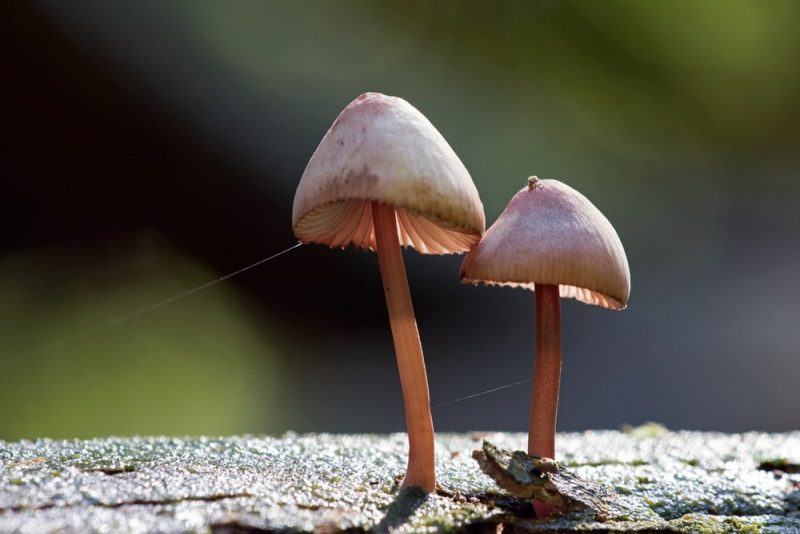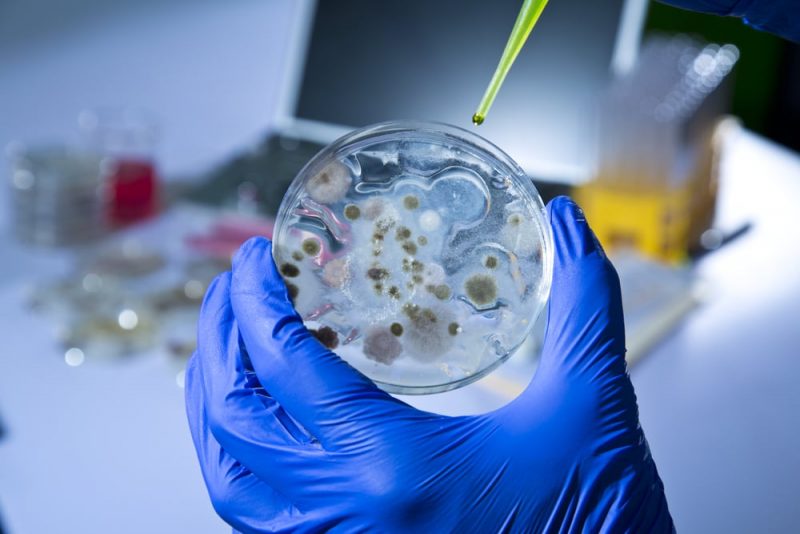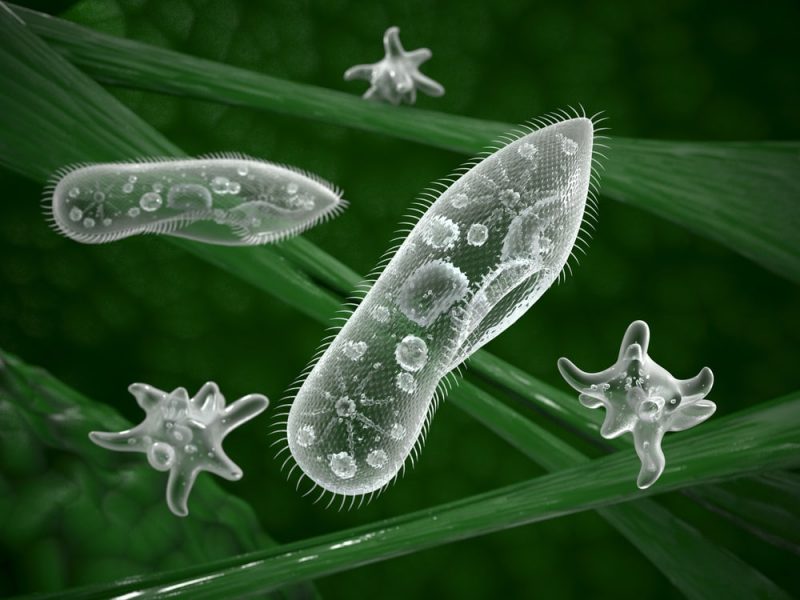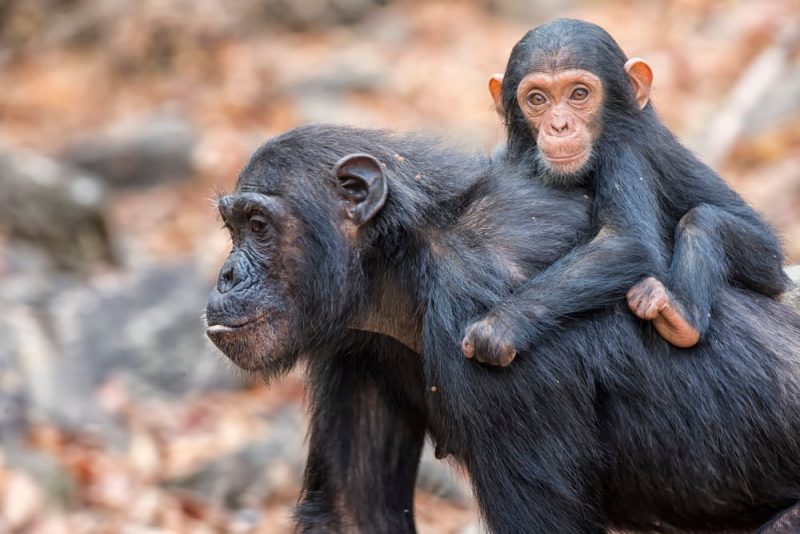The living beings They can be classified into five kingdoms (animal kingdom, plant kingdom, fungi kingdom, protist kingdom and monera kingdom) according to certain common characteristics that group them.
This division was postulated by the American botanist Robert Whittaker in 1969. Whittaker grouped living beings in each kingdom according to their morphological characteristics, mode of locomotion, type of reproduction and structure of their cells. These kingdoms are:
- animal Kingdom. It is made up of multicellular eukaryotic organisms, which are distinguished from other eukaryotic organisms by having a highly developed locomotor capacity and not having a cell wall. For example: amphibians like the toad, reptiles like the lizard, mammals like the bear.
- vegetal kingdom. Also called kingdom Plantae, the plant kingdom is made up of multicellular eukaryotic organisms that live in terrestrial and aquatic ecosystems and obtain their energy through photosynthesis. For example: trees like oak, shrubs like ligustrina, vegetables like lettuce.
- Fungi kingdom. It is made up of eukaryotic organisms, most of which are multicellular, which differ from plants because they are heterotrophs and from animals because they have cells with a cell wall (made up of chitin that differentiate them from plants made up of cellulose). For example: mushrooms such as champignon, yeasts such as brewer’s yeast.
- Protist kingdom. It is made up of eukaryotic organisms, mainly unicellular, although they can also be colonial or simple multicellular that do not form tissues. This kingdom includes a great variety of organisms different from each other. For example: amoebas, protozoa such as paramecium, brown algae.
- Monera kingdom. It is made up of prokaryotic organisms. This kingdom is the only one that is not made up of eukaryotic organisms. For example: bacteria such as bacilli, streptococci, spirochete.
During the last decades, this division was one of the most representative within the order and classification of living beings. In recent times, new studies and discoveries (mainly within unicellular organisms of the monera kingdom) have called into question this traditional classification, which gave rise to new classification systems that are updated with advances in the knowledge of biological diversity.
Characteristics of the animal kingdom
- Cell organization. They are eukaryotic organisms (their cells have a nucleus that stores the organism’s genetic material) and multicellular (they are made up of more than one cell). In all animals (except the simplest) cells are organized to form tissues, and tissues are organized to form organs.
- Nutrition. They are heterotrophs, they do not produce their own food but they feed on other living beings.
- Reproduction. Most of these organisms reproduce sexually.
- Breathing. They are aerobic, they need oxygen to breathe and survive.
- Locomotion. Most animals are able to move for at least part of their life cycle.
- Classification. They can be classified into invertebrates (insects, crustaceans, mollusks) and vertebrates (mammals, reptiles, amphibians, fish, birds).
Characteristics of the plant kingdom
- Cell organization. They are multicellular eukaryotic organisms.
- Nutrition. They are autotrophs, they obtain their food through photosynthesis, a process by which they convert inorganic substances into organic matter.
- Reproduction. They reproduce sexually and asexually.
- Breathing. They are aerobic. Its cells contain chlorophyll, a pigment that captures energy from the sun for photosynthesis. They are essential in ecosystems since they generate the oxygen that other organisms need.
- Locomotion. They are organisms that cannot move under their own power.
- Classification. Plants are classified into four main groups. The bryophytes group includes the mosses, liverworts, and hornworts. Pteridophytes are seedless plants, among which are ferns and club mosses. Gymnosperms are bare-seeded plants, this group includes conifers, cycads, ginkgoes, and gnetophytes. Angiosperms are plants with seeds enclosed within a fruit, this group includes dicots and monocots.

Characteristics of the fungi kingdom
- Cell organization. They are multicellular and unicellular organisms that are found in very diverse habitats and share characteristics with the animal and plant kingdoms.
- Nutrition. They are heterotrophs that secrete digestive enzymes onto the food source and then absorb it. Fungi are the primary decomposers of dead matter in plants and animals. In addition, they form symbiotic relationships with other organisms. They lack chlorophyll so, unlike plants, they cannot carry out photosynthesis.
- Reproduction. They reproduce sexually and asexually.
- Breathing. Most breathe aerobically, meaning they depend on oxygen to survive. Some, like those that inhabit the intestines of herbivores, have anaerobic respiration, they do not need oxygen to survive.
- Locomotion. Like the organisms of the plant kingdom, the organisms of the fungi kingdom cannot move under their own power.
- Classification. Includes mushrooms, yeast, and mold. Within the mushrooms there are edible fungi, hallucinogens, fungi that cause diseases in animals and plants, toxic and medicinal fungi.

Characteristics of the protist kingdom
- Cell organization. It is made up of simple unicellular or multicellular eukaryotic organisms. They do not have distinctive features that group them.
- Nutrition. Some organisms feed autotrophically (they make their own food), others heterotrophically (they don’t make their own food).
- Reproduction. Some organisms reproduce asexually and others sexually. There are species that alternate both types of reproduction.
- Breathing. They use oxygen to extract energy from organic substances.
- Locomotion. Most protists can move and move (by creeping or by flagella and cilia).
- Classification. Until recently, all protists were classified as the kingdom Protista, but this classification was the default: protists included any eukaryote that was not a land plant, fungus, or animal. Currently, biologists classify them into five “supergroups”: Excavated, Cromalvelados, Rizarios, Archaeplastidos and Unicontes.
Characteristics of the Monera kingdom
- Cell organization. They are the smallest and oldest cellular organisms on record. They do not have a membrane that delimits the cell nucleus or organelles in their cell.
- Nutrition. They can be nurtured in an autotrophic or heterotrophic way.
- Breathing. Some depend on oxygen to survive (they are aerobic), other organisms do not need it (they are anaerobic).
- Reproduction. They reproduce asexually through binary fission or bipartition.
- Locomotion. Some organisms use flagella for their locomotion.
- Classification. The latest studies maintain that these organisms make up two different kingdoms: the archaea kingdom and the bacteria kingdom.

Examples from the animal kingdom
| Bee | Seal | Mosquito |
| Eagle | Swallow | Bat |
| Ostrich | Sparrow | Sheep |
| Horse | Hippocampus | dove |
| Shrimp | Ant | Turkey |
| Camel | Iguana | flea |
| Chimpanzee | Wild pig | Octopus |
| Deer | Kiwi | Frog |
| Alligator | Lizard | Rhinoceros |
| Hummingbird | Locust | Salamander |
| Weasel | Owl | Salmon |
| Condor | Wolf | Toad |
| Rabbit | Worm | Sardine |
| Beetle | Parrot | Snake |
| Scorpion | Stingray | Shark |
| Starfish | Raccoon | Turtle |
| Flemish | Mussel | Triton |
Examples from the plant kingdom
| Abelia | Cedar | Magnolia |
| Fir tree | Cherry | Maguey |
| Acacia | Cypress | Corn |
| Oleander | Carnation | Malvón |
| Avocado | Cauliflower | Apple tree |
| Poplar | Dahlia | Mint |
| Basil | Dracena | Olive |
| Cork oak | Eucalyptus | Ombú |
| Carob tree | Eugenia | Orchid |
| aloe vera | ash tree | Palm tree |
| Begonia | Fern | Oak |
| Cocoa | Fig tree | pink |
| Cactus | Jacaranda | Sage |
| Calendula | Jasmine | Soy |
| Bell | Laurel | Wheat |
| Sugar cane | Lily | Tulip |
| Carica papaya | Honeysuckle | purple |
Examples of the fungi kingdom
| Pumpkin mushroom | Gyrgola | Mold |
| Fly agaric | Penicillium chrysogenum | Crepidotus caspari |
| Amanita pantherina | Star mushroom | Phycomyces nitens |
| Damper | Pine mushrooms | Pipe |
| Aspergillus parasiticus | huitlacoche | Portobello |
| Pearl puffball | Hydnum repandum | Pycnoporus sanguineus |
| Bitter ticket | Terrestrial languages | Reishi |
| Satan’s Ticket | Beer yeast | Rhizopus stolonifer |
| Candida albicans | Maitake | Black rust |
| Champignon | Malassezia | Russula brevipes |
| Devil’s cigar | Matsutake | Saccharomyces exiguus |
| Morel | Microsporum | Ganoderma lucidum |
| Ergot | Agaricus campestris | Chinese mushroom |
| Craterellus cornucopioides | Mycena cyanorrhiza | Lawnmower mushroom |
| Digüeñe | Níscalo | Trametes versicolor |
| Epidermophyton l | Judas ear | Trichophyton rubrum |
| Rounded Earth Star | Indian bread | Black truffle |
Examples of the protist kingdom

| Chloraracne algae | Sporozoa | Plasmodium falciparum |
| Brown algae | Euglena | Plasmodium malariae |
| Green algae | Foraminifera | Plasmodium vivax |
| Amoeba proteus | Giardia lamblia | Plasmopara viticola |
| Babesia canis | Gregarine | Pseudomonilicaryon anser |
| Balantidium coli | Heliozoa | Radiolaria |
| Besnoitia besnoiti | Imbricatea | Rhinosporidium seeberi |
| Ceratium | Laurencia | Stentor |
| Cercomonade | Leishmania donovani | Stentor coeruleus |
| Chloroflexia | Macrocystis pyrifera | Theileria parva |
| Ciliophora | Metamonade | Trachelomonas |
| Cryptophytes | Neospora | Trichomonas vaginalis |
| Dermocystidium | Nuclearia | Trypanosoma brucei |
| Diatoms | Opaline | Trypanosoma cruzi |
| Dinoflagellates | Paramecium | Volvox |
| Eimeria teniella | Percolomonas | Vorticella |
| Entamoeba histolytica | Percolozoa | Zoomastiginos |
Examples of the Monera kingdom
| Acidilobus saccharovorans | Escherichia coli | Mycobacterium leprae |
| Acinetobacter baumannii | Golden staphylococcus | Mycobacterium tuberculosis |
| Actinobacteria | Ferroplasma | Mycoplasma |
| Bacillus | Haloacterium salinarum | Neisseria |
| Bacillus thuringiensis | Haloarcheas | Neisseria gonorrhoeae |
| Purple bacteria | Halobacterium mediterranei | Neisseria meningitidis |
| Green sulfur bacteria | Haloquadratum walsbyi | Pyrodictium |
| Bifidobacterium adolescentis | Helicobacter | Salmonella |
| Brucella | Helicobacter pylori | Shigella |
| Burkholderia cenocepacia | Ignicoccus hospitalis | Staphylococcus |
| Burkholderia glumae | Lactobacillus | Streptomyces griseus |
| Campylobacter jejuni | Listeria | Sulfolobus islandicus |
| strain 121 | Methanomicrobium | Thermoproteus |
| Clostridium, | Methanopyrus kandleri | Thiomargarita namibiensis |
| Corynebacterium, | Methanosaeta concilii | Vibrio |
| Desulfurococcus mobilis | Methanosarcina vacuolata | Vibrio cholerae |
| Enterobacter cloacae | Moraxella catarrhalis | Yersinia enterocolitica |

